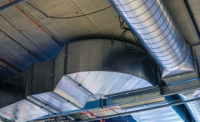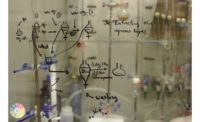We are beginning to gain a true perspective into just how important the resiliency of the indoor built environment is in helping keep occupants safe and healthy during episodic events, such as the current COVID-19 pandemic. An important realization is just how ill-equipped our building stock may be in helping achieve this reality. Our businesses, schools, stadiums, airports, shopping malls, and almost every other conceivable venue has been closed for months, and as we attempt to reengage the public within the economy, we are beginning to experience a resurgence in COVID-19 cases across the U.S., signaling perhaps another major shutdown in our future.
One question that must be addressed is how do we achieve a level of resiliency in building design that helps us “weather the storm” when faced with unprecedented events like this in the future, and can we achieve indoor environments that allow these buildings to retain some level of functionality? Issues with indoor air quality (IAQ) are nothing new, but, of course, the disease COVID-19 (caused by the SARS-CoV-2 virus) certainly is.
Unfortunately, little is known with regard to the novel SARS-CoV-2 virus. Preliminary research indicates this virus (like many others) may be transported within the air as very small submicron particles, further classified as “droplet nuclei.” These are the result of respiratory fluids that are aerosolized when expelled to the environment by an individual who may be coughing, sneezing, talking, or breathing. These aerosol droplets include mucosal and saliva fluids containing an assortment of liquids, salts, viruses, bacteria, volatile compounds, etc. Droplet nuclei are of concern as their viral component has been found to retain its stability (virulence) for hours as an aerosol (days as a fomite on surfaces) and, based on its size and weight, can remain suspended in the air almost indefinitely. The good news is that HVAC systems may be able to play a part in helping remove these from the air.
Traditional HVAC ventilation, filtration, pressurization, and advanced IAQ technologies can work when properly applied. The basic concept behind each — separately or bundled — is to provide “fresher” air to a space, diluting (ridding) the occupied environment of airborne contaminants in order to support a safer and healthier indoors. In its simplest form, ventilation flushes a space with cleaner (outdoor) air and/or recirculates space (return) air through filters designed to remove harmful pollutants. HVAC system-mounted IAQ devices can be engineered to complement ventilation and filtration by helping to enhance the quality of air provided to the occupied space. The common thread connecting the efficacy of each approach is ensuring the particulates are removed from the indoor environment and exhausted, captured, or treated by the HVAC system. In the case of an airborne virus, which is a particulate, this is what ultimately interrupts the transmission of the infectious agent that spreads disease between building occupants.
It’s estimated that 98% of the 18 million to 20 million particles contained in every cubic foot of air we breathe is 2.5 microns or smaller in size. This is the particle size range identified as the most harmful for humans to inhale and those responsible for considerable risk related to illness and disease.
The U.S. Environmental Protection Agency (EPA) has identified IAQ as one of the most urgent environmental risks to public health. The air we breathe may contain a variety of contaminants, such as viruses, bacteria, pollen, dust, smoke, and volatile organic compounds (VOCs). Note that all of these are particles or gas.
An extensive body of scientific evidence demonstrates that short-and long-term exposure to particle and gas pollution negatively affects our health and wellbeing. The world’s leading health-related organizations consider fine particulate matter (the really small stuff) the most dangerous for humans because they penetrate deep into the lungs and bloodstream, where they pose a grave threat to human health. Much of the fine particulate existing within the indoor air is too small in size or light in weight to be removed from the occupied space by the influence of air motion alone, thus it can therefore remain suspended in the air indefinitely. It may include viral material and other pathogens as part of these airborne particles, which then act as a transport mechanism for respiratory infection between individuals breathing this air. Traditional HVAC ventilation and filtration strategies may have little impact on cleaning the indoor environment as these small particles of concern cannot be moved out of the space and into the HVAC system to be exhausted, filtered, or treated. Technologies that help remediate this problem, similar to those used in cleanroom applications, should therefore be considered.
If the particles and gasses in the space are removed, they are no longer of concern. Needlepoint bipolar ionization (NPBI) is capable of helping improve traditional ventilation and filtration by influencing the removal of small airborne particulate from the environment based on the principle of electrostatic attraction (agglomeration). Ions, like those already prevalent in cleaner outdoor air, are artificially generated within the HVAC system so that when released and distributed throughout the building they mix with room air and attach (electrostatically) to airborne particles. As these charged particles are increasingly attracted and joined to one another, their size and weight is increased to the point where they are large and heavy enough to be moved with the HVAC system’s air movement. They can now be effectively removed from the space and exhausted, filtered, or treated. Air filters now become more efficient at removing these larger particles from the air and internally mounted HVAC air purification devices can actually come in contact with the pollutants they have been tasked with cleaning, those which before had remained in the space.
NPBI has been successfully used in cleanroom applications to help reduce airborne particle counts and create the cleanest indoor environments possible for critical pharmaceutical, food processing, and manufacturing processes. A large number of studies have demonstrated that air ionization is efficient at removing aerosols and particles from the environment, proving significant reductions in particulate concentrations. The HVAC system fan and NPBI device should be left on continuously to recirculate space air in order to produce the best results.
In addition to NPBI helping rid indoor environments of particulate, it can provide additional IAQ benefits by inactivating viruses, breaking down VOCs, remediating odors, and killing living pathogens. Applied upstream of wet cooling coils, NPBI eliminates issues with biofilm and microbial growth in HVAC air-handling systems. The negative ions contain an extra electron, while the positive ions are missing an electron, resulting in an unstable condition. In an effort to re-stabilize, these bipolar ions seek out atoms and molecules in the air to trade electrons with, effectively neutralizing particulate matter, bacteria and virus cells, odorous gases and aerosols, and VOCs. It also makes air filters more effective, including N95 masks
A very important consideration when installing any electrically powered IAQ device within the built environment is to ensure it complies with ASHRAE Standard 62.1-2019, “Ventilation for Acceptable Indoor Air Quality” (Section 5.7.1, Air Cleaning Devices). Air cleaning devices should be listed and labeled in accordance with Underwriters Laboratories UL-2998 for zero ozone emission. All UL-validated zero ozone emission products must demonstrate they emit less than the maximum ozone concentration limit of 0.005 ppm (5 ppb), which is below quantifiable levels for ozone testing. This is tenfold less than permitted under test standard UL 867, which allows concentrations of 0.05 ppm (50 ppb). In the ASHRAE Position Document on Filtration and Air Cleaning, it is stated that “even though the ozone is an unintentional by-product of operation, it may represent a net negative impact on indoor air quality and thus should be used with caution. If possible, non-ozone-emitting alternatives should be used.” Ozone is recognized by the EPA and others as a toxic gas and respiratory irritant. Only electrically powered air cleaning devices bearing the UL-2998 validation seal will meet ASHRAE Standard 62.1 requirements.
Even though the onslaught from this current pandemic will one day subside, we will be left with an array of existing and unsolved building IAQ issues, wondering if we will be better equipped to respond to the next viral mutation. Perhaps it really doesn’t matter “what’s next” because it’s possible we already have the HVAC technologies and products needed to defend building occupants from whatever comes our way.
References:
1.Journal of Electrostatics: Efficiency of Ionizers in Removing Airborne Particles in Indoor Environments (2017) 79-84.
2. ASHRAE Position on Infectious Aerosols.
3.ASHRAE Position Document on Airborne Infectious Diseases.
4.ASHRAE Position Document on Filtration and Air Cleaning.
5.David N. Schurk, Whitepaper: The HVAC System’s Role in Environmental Infection Control for Hospitals.
6.David N. Schurk, Whitepaper: Protecting Occupants in Non-Healthcare Environments from Airborne Infections.
7.David N. Schurk, Whitepaper: Can HVAC Filters “Catch” the SARS-CoV-2 Virus?










